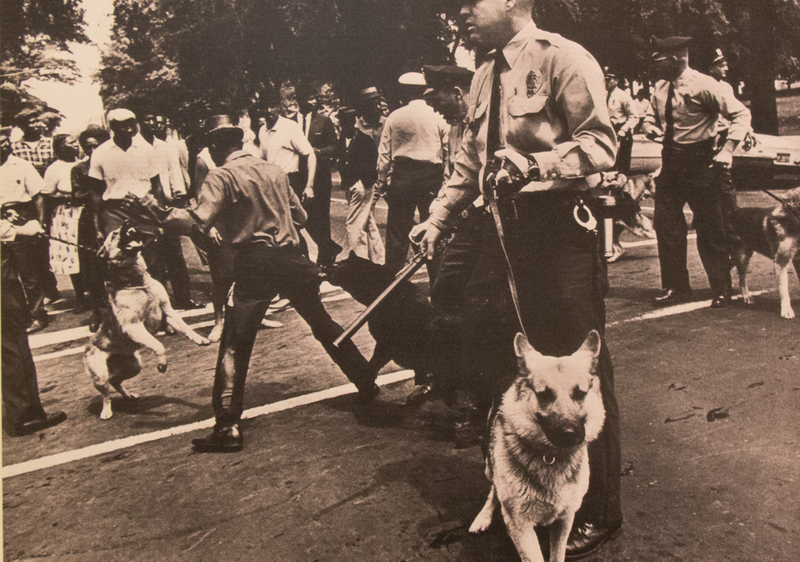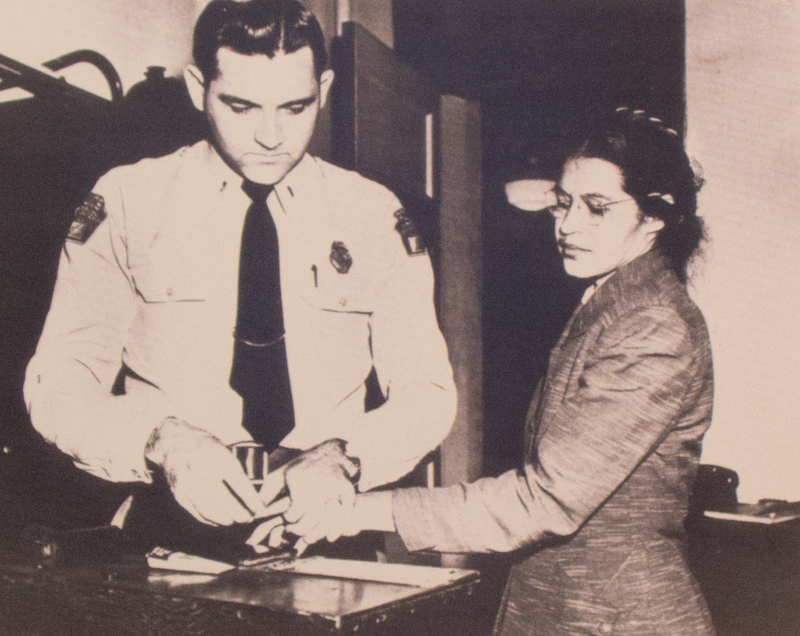Professors utilize 'Road to Promised Land'

Two Chadron State College faculty members took the opportunity to connect student coursework with a visit to the Road to the Promised Land exhibit in the Mari Sandoz High Plains Heritage Center.
Rich Kenney, assistant professor social work, and Mary Donahue, professor of art, each customized the assignment to relate to the students in their courses.
Eight juniors in Kenney’s senior-level social work class approached their visit to the display from the perspective of a fictitious person who might be experiencing hardship, economic or social injustice, physical or mental challenges.
Kenney said his students are learning how to work with members of these populations so he designed the assignment with the intent that the future social workers would gain more empathy for people in vulnerable groups who sometimes experience difficulties in social functioning.
Immediately after viewing the exhibit, Kenney and his students met for a discussion in the Kosman classroom in the lower level of the Sandoz Center. The students commented on their notes and impressions from both their own perspectives and that of their chosen characters.
“I was interested in their insights and reactions based on their respective groups,” Kenney said.
Chelsea Rugg of Rapid City, South Dakota, said visiting the display as a person who was legally blind inspired her. Learning what others have achieved and overcome in the face of incredible adversity made her character feel like achieving her dreams is not so far-fetched.
“While I could not fully appreciate the pictures due to my condition, my parents, who brought me to the exhibit, read to me all the captions and quotes on display. One, in particular, stuck out. It was a quote by Rosa Parks, and the ending of it read, ‘… the only tired I was, was tired of giving in,’” Rugg said.
Ashly Lunbery of Alliance, Nebraska, toured the display as a mother living with her children in poverty after leaving her abusive husband.
“After viewing this display I am extremely grateful for what we do have, even if that is just each other. Throughout this display I found it depressing that people are capable of this level of hate, especially towards innocent children,” Lunbery said, from the viewpoint of her character.
Lunbery did find the exhibit inspiring because the Civil Rights activists stuck together. In spite of how they were treated, they never gave up.
Cierra Herrmann of Scottsbluff, Nebraska, stepped into the shoes of a female Cambodian refugee, a natural extension from her study of Cambodian women last summer in Kenney’s SW 371 International Social Welfare course.
“As a new person to this country, I could not believe that America had experienced so much violence. Most people only talk about how perfect the United States is. I can definitely relate to some of these people, those pictured in the exhibit,” Herrmann wrote in her reflection paper.
Students in Donahue's ART 239 class, part of the Essential Studies Program, also completed assignments related to their coursework by visiting the display and analyzing it from the perspective of an artist or graphic artist.
“I tried to tie the assignment to the idea of overcoming obstacles and how art deals with difficult things in life. Also they are learning what aesthetics means, asking, ‘What is beauty?’ and considering why humans need beauty in their lives,” Donahue said.
—Tena L. Cook, Marketing Coordinator
Category: Campus News


